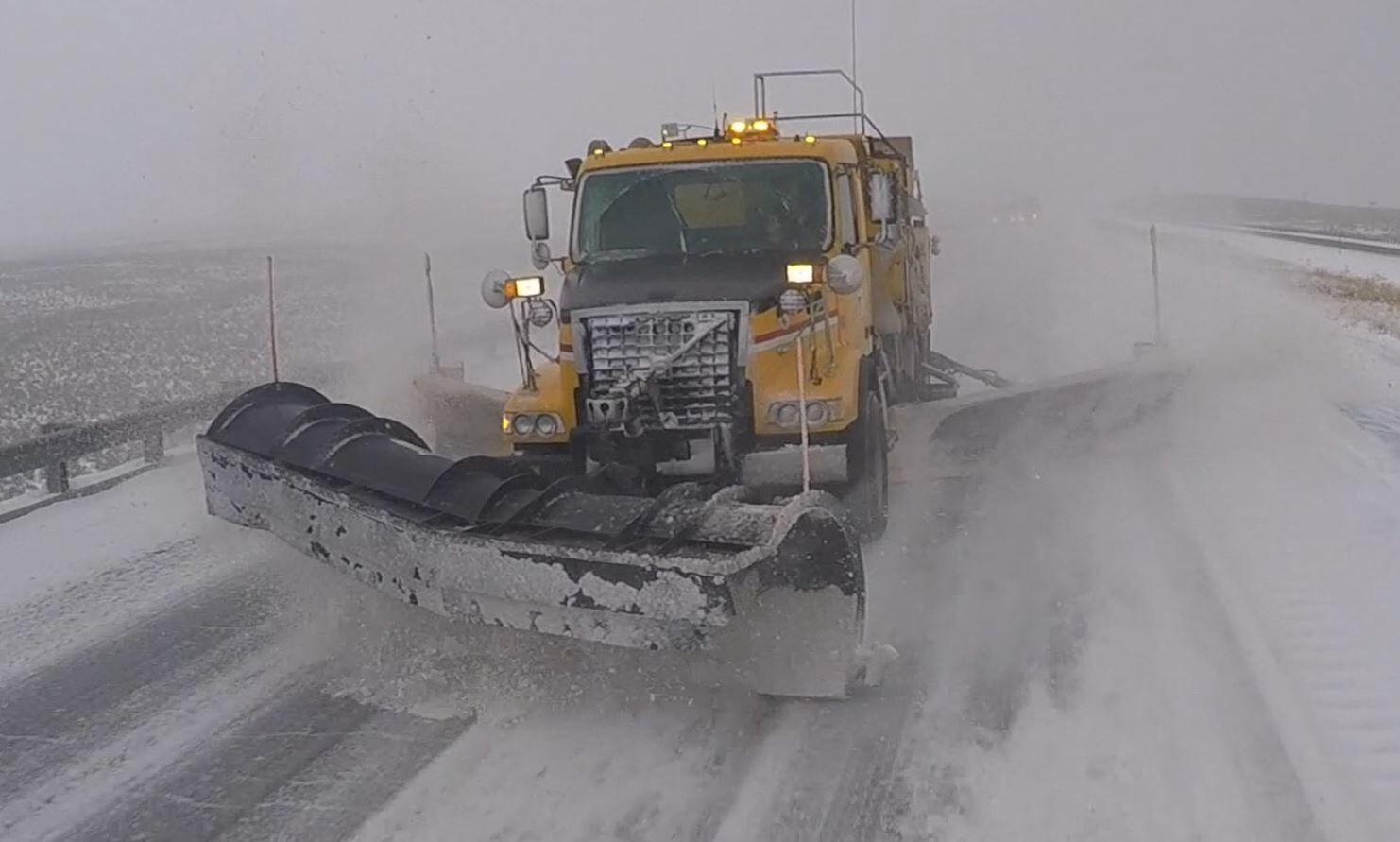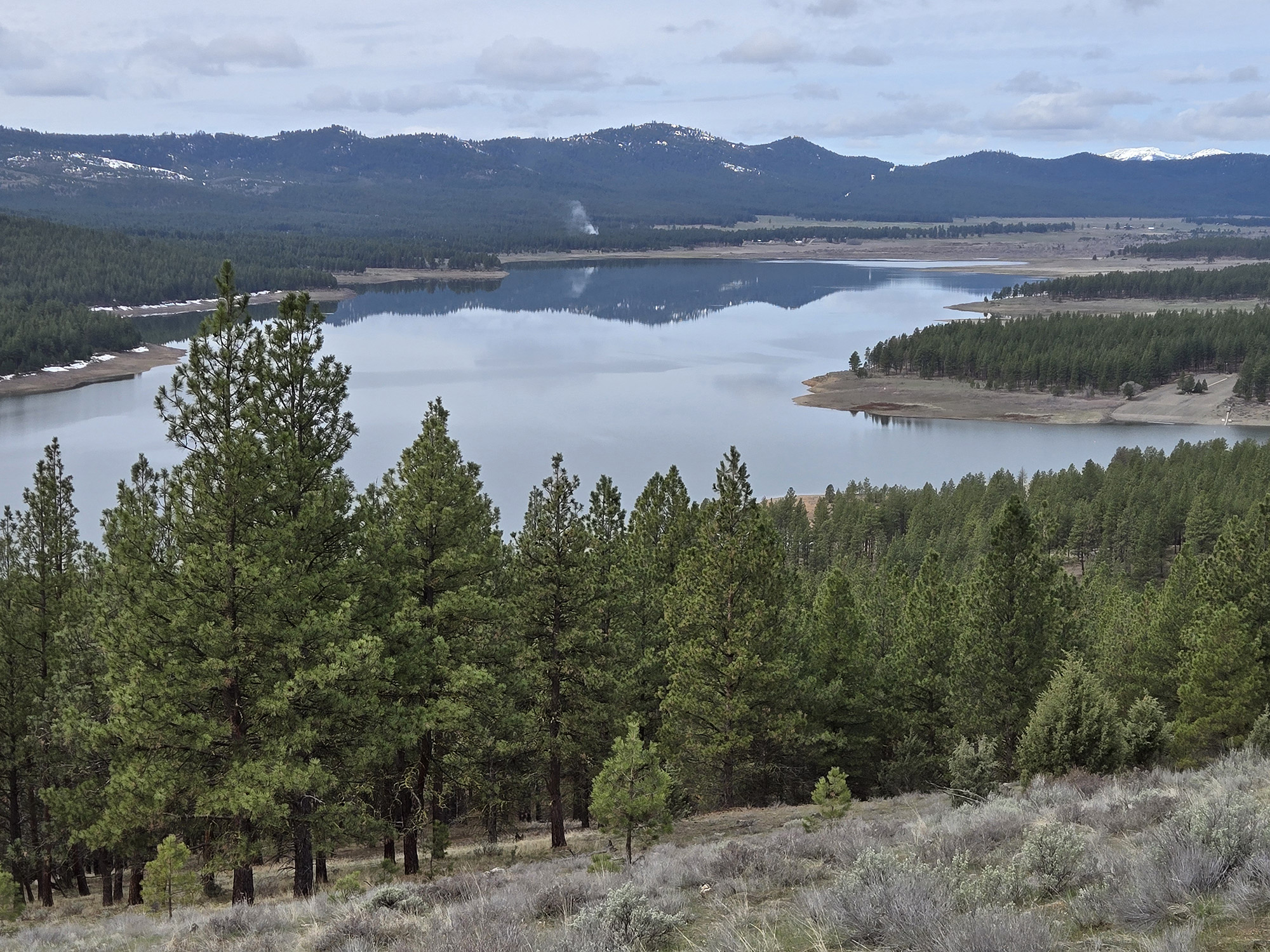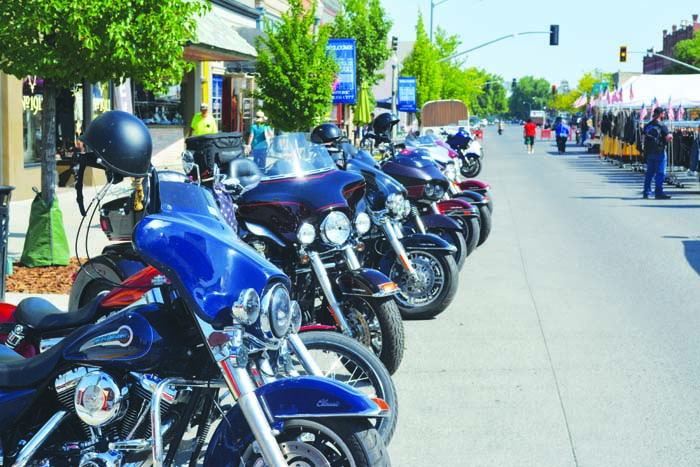King of the Road
Published 12:00 am Thursday, August 7, 2003

- Gary and Konnie McManus practically have their Milwaukie home with them when they're on the road for about five months a year, traveling in their 45-foot motor home. (Baker City Herald/S. John Collins).
By JAYSON JACOBY
Trending
Of the Baker City Herald
Gary and Konnie McManus can relax in the soft cosseting comfort of leather-clad chairs and still cover more than a mile every minute.
So long as a couple dollops of diesel still slosh in the 210-gallon tank, that is.
Trending
The open road, though as familiar to the McManuses as their own front porch, is not their permanent home.
But it could be.
And to live there they would not need to sell their hi-fi DVDs, swap their air-filled adjustable mattress for a wafer-thin foam pad that couldn’t cushion a pebble, or sip their soda sans ice cubes.
When the McManuses hit the highway, they bring the kitchen sink.
And the shower.
And the microwave/convection oven.
And the side-by-side refrigerator-freezer.
And the. . . . well, suffice it to say that if you yearn to heat some soup or cool a sweaty brow, wash your hair or dry your socks, the McManuses own an appliance that will do the job.
And do it whether you’re parked beside a dirt path 50 miles from the nearest mini-mart, or cruising I-5 between Portland and Palm Springs.
The McManuses’ permanent home (the one without wheels and the 470-horsepower diesel engine) is in Milwaukie, a Portland suburb.
But they are among the millions of Americans who also travel in recreational vehicles (RVs).
Travel in, and live in, sometimes for weeks at a time.
For the McManuses, their 45-foot-long Country Coach Prevost is headquarters for about five months of every year.
In winter they escape the Willamette Valley’s relentless rains and journey to reliably sunny Arizona.
The couple’s summer travel schedule includes a six-week stay at the Mountain View RV Park in Baker City.
Gary, 69, grew up here and graduated from Baker High School in 1952.
He later moved to Portland and got into the car-selling business with his dad. The family’s Lincoln-Mercury dealership in Gladstone recently celebrated its 44th birthday.
The McManuses have owned several RVs some barely half as long as the current coach. They have traveled tens of thousands of miles in their homes-away-from-home.
Both Gary and Konnie, 56, said they relish the freedom their RV bestows on them.
The freedom to live for a week without seeing a gas station, grocery store or campground.
The freedom, thanks to the diesel-burning generator that powers their passel of appliances, to shun every electrical outlet they see.
“Just diesel and water that’s all we need,” Gary said. “It’s a neat way to travel around the country.”
For all that, Konnie admits she’s always happy to walk across the threshold of their stationary home after a long journey.
But she doesn’t give up a single luxury or convenience when she swaps her home’s concrete foundation for her RV’s eight hip-high tires.
“I have everything in there,” Konnie says, aiming a finger at the RV’s stainless-steel flanks, shined to such a gloss that you could stand in front of them to check the part in your hair.
“I don’t really miss anything,” she said. “I can put on a meal in this motorhome the same as at home.”
New friends, and a new life
Konnie often shares those meals with fellow RVers in the parks where the McManuses sometimes stay.
Meeting new friends is one of her favorite aspects of the RV life.
“We just have a ball,” Konnie said. “I can’t say there’s anything about it I don’t like.”
You might expect a different answer from Gary.
After all, he pilots this behemoth that is more Greyhound than gazelle.
He has to steer, within the same width of asphalt afforded the tiniest Toyota, a vehicle that carries, in addition to those 210 gallons of diesel fuel, 150 gallons of fresh water and up to 200 gallons of water that’s not so fresh (there’s a shower and sink inside, remember, as well as a toilet).
But Gary said the RV’s size, though intimidating initially, seems now, after 48,000 miles at the wheel, to be of more manageable proportions.
“There’s certain places we don’t go with a coach this size,” he said. “But I can turn this thing pretty tight.”
The McManuses’ story is a common one, said Carrie Folkman, who owns Mountain View RV Park.
“The Baby Boomers are retiring in record numbers, and they’re all buying RVs,” she said. “And the trend is toward larger ones.”
Every one of Mountain View’s 85 spaces was occupied earlier this week, Folkman said.
And she expects a full house right through the weekend, as a caravan of RVs loaded with Shriners rolls in to take in Saturday night’s annual East-West Shrine All-Star football game at Bulldog Memorial Stadium, a few blocks south of the park.
Folkman said she has met dozens of couples for whom an RV is a second home.
And for many, their only home.
But Folkman has seen very few RVs that compare with the McManuses’ either in size their 45-footer is the longest RV allowed on the highways or in sheer opulence.
One of the biggest of the big
Of course the freeways aren’t exactly clogged with $680,000 vehicles.
To be precise, $683,000.
That was the list price for the McManuses’ Country Coach, which was assembled in Junction City.
“And the price has gone up $200,000 since I bought it six years ago,” Gary said.
So what do you get for the price of 34 Honda Accords (give or take a Civic or two on the side)?
Well, you enter the McManuses’ RV by climbing a trio of steps and then stepping onto a floor all fashioned from polished granite tiles that might boost the value of the Taj Mahal.
(Gary once owned an RV with a marble floor, which sounds exotic, but apparently marble is vulnerable to olive juice, among other liquids. The problem, Gary said, is that marble is more porous than granite, and thus, as his experience with olive juice proved, prone to stains. Hence his preference for granite.)
The driver’s seat rides atop air-filled cushions, so Gary will feel no more than a gentle flutter if he hits a pothole (although, at 47,000 pounds, his RV probably could roll over a brawny pickup truck without provoking anything but a brief shudder from the shocks).
The passenger’s chair, with its contoured seat and cushioned armrests as thick as a loaf of bread, could occupy the high-end section of a fancy furniture store. Electric motors adjust the chair in any of six directions, and its footrest pivots into position in an eerily silent and fluid fashion, like a well-lubricated robotic arm.
Directly in front of the chair, and just below the windshield, is a panel festooned with 20 or so square buttons.
Gary taps one with his index finger, and soft lights, some yellow, some red, illuminate the panel.
The buttons control everything from the “mood lights,” which line both the walls and the suede-covered ceiling, and resemble the lights along theater aisles, to the “dash heat exchange,” a device that sounds as if it ought to be installed in a space shuttle.
The kitchen is about 10 feet back, just aft of a sofa that converts into a bed.
The drawers and cabinets are faced with Vitracore, Gary said.
It’s a laminate that polishes to an eye-watering gleam.
It cost extra, Gary said.
$20,000 extra.
Deep in the RV’s nether regions purrs the diesel-fired generator, which powers a passel of electric gadgets, including a trio of air-conditioners.
“I can freeze you out,” Gary says.
And just as rapidly he can pluck you from the brink of hypothermia by stoking the BTUs out of either a diesel-powered furnace or the electric heat strips hidden above the suede ceiling.
The generator also charges a bank of six batteries when the battery power dips, the generator starts itself to replenish the power.
The RVs heart, though, is its Detroit Diesel inline 6-cylinder, turbocharged engine.
At freeway speeds the motor chugs a gallon of diesel every eight miles or so, Gary said too thirsty to impress Arianna Huffington, perhaps, but not far below mileage figures for SUVs that weigh 20 tons less.
Befitting this RVs pampering nature, the engine, for all its brute power, subjects passengers to nary a decibel of clatter.
“The only thing you can hear when you’re cruising on the freeway is the whoosh of the wind,” Gary said.
It helps, too, that the engine is relegated to the rear of the vehicle, and ensconced between sound-eating layers of lead and foam.
Of all the accessories attached to the McManuses’ RV, the most incongruous is the pedestrian red-and-black “For Sale” sign stuck in the windshield. It’s the sort of thing you’d expect to see pasted onto a rust-eaten ’73 Pacer.
Gary confirms that the RV is for sale.
But he’s not talking price, nor is he anxious to make a deal.
Eventually the McManuses would like to find a buyer, though, and when they do they plan to build their retirement home a log cabin, actually somewhere near Baker City.
But they’ll continue to winter in the desert, and when they migrate they’ll do so in an RV.
Albeit one shorter than 45 feet.
Gary has owned many RVs during the past 30 years.
And he has learned during that time that though he relishes that moment when he wheels the rig into his driveway after a long absence, the joy of a homecoming never will surpass the exhilaration of traveling, free to go and to stop whenever and wherever he and Konnie choose, their route and their destination uncertain.
“I might be ready to go home,” he said. “But man, I have a good time on the road.”
And then he points a finger at his big machine, and nods.
“That’s what I bought this for.”









